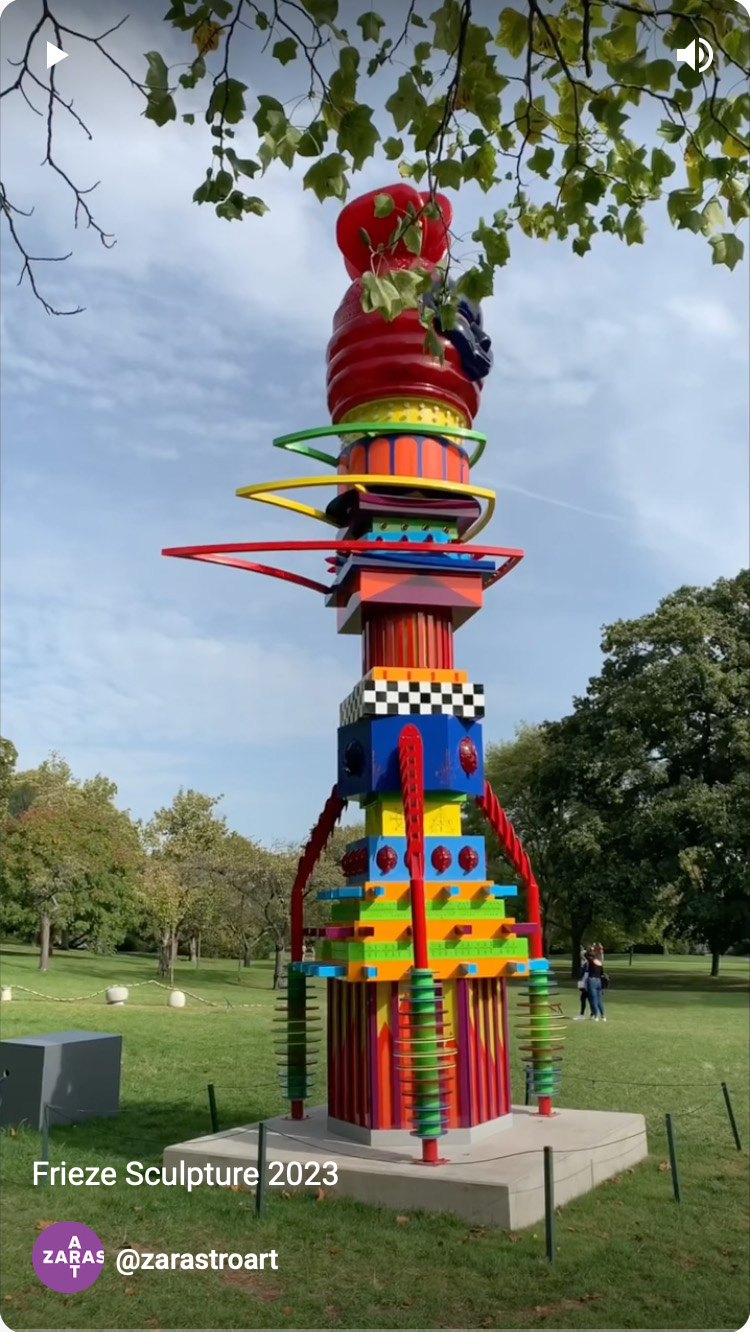Curated by Fatoş Üstek, Frieze Sculpture in The Regent’s Park showcases 21 leading international artists and young practitioners whose works delve into themes of transformation, political empowerment, contemporary rituals, and social imagination.
The exhibition encompasses site-responsive and site-specific projects, showcasing a diverse range of sculptural methods. Nature plays a vital role, as artists draw from their personal encounters and viewpoints of the natural world. They investigate the connection between nature, humanity, and the environment through their work.
Üstek emphasizes that this year’s Frieze Sculpture offers a fresh perspective on sculpture, showcasing a blend of monumental and ephemeral artworks that engage with various artistic mediums. In addition to the exhibition, a program of performances and talks have enhanced the art experience within The Regent’s Park.
Several artists discuss their work in the context of monumentalism, emphasizing the importance of monuments in contemporary society and their ability to convey various narratives and emotions.
One standout work in the exhibition is Leilah Babirye’s “Gyagenda,” which symbolizes resilience, strength, and love. Made of bronze, this monumental sculpture combines collected materials to create a unifying and emboldening work. Babirye’s art addresses issues of identity, sexuality, and human rights, emphasizing the importance of compassion, acceptance, and empathy.
Ayşe Erkmen’s “Moss Column” is a living sculpture that breathes with The Regent’s Park. This sandstone column, covered in moss, blends into the park’s landscape from a distance but reveals its form and texture when viewed up close. The sculpture invites visitors to engage with it on a sensory level, allowing them to touch and experience the seductive softness of moss.
Frieze Sculpture ends on October 29.





